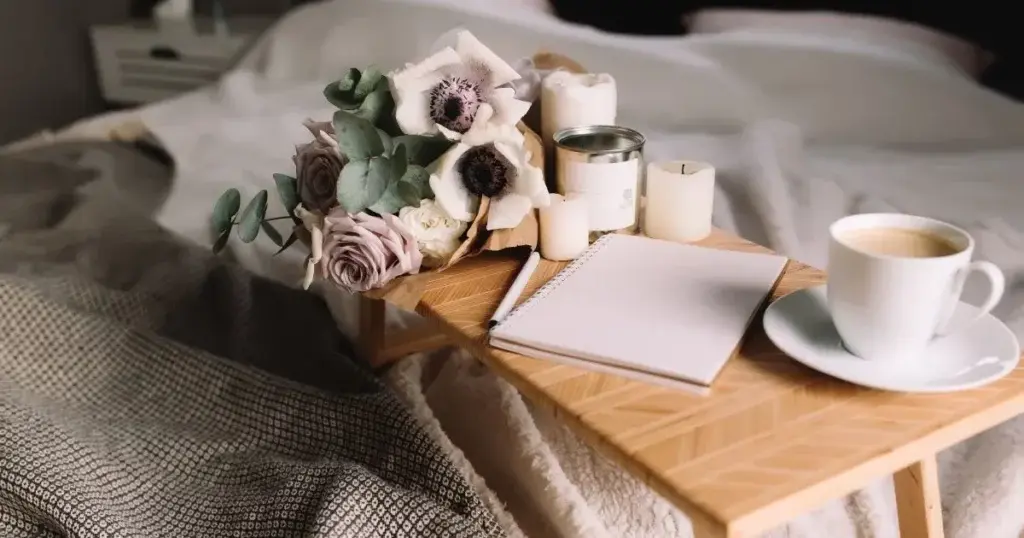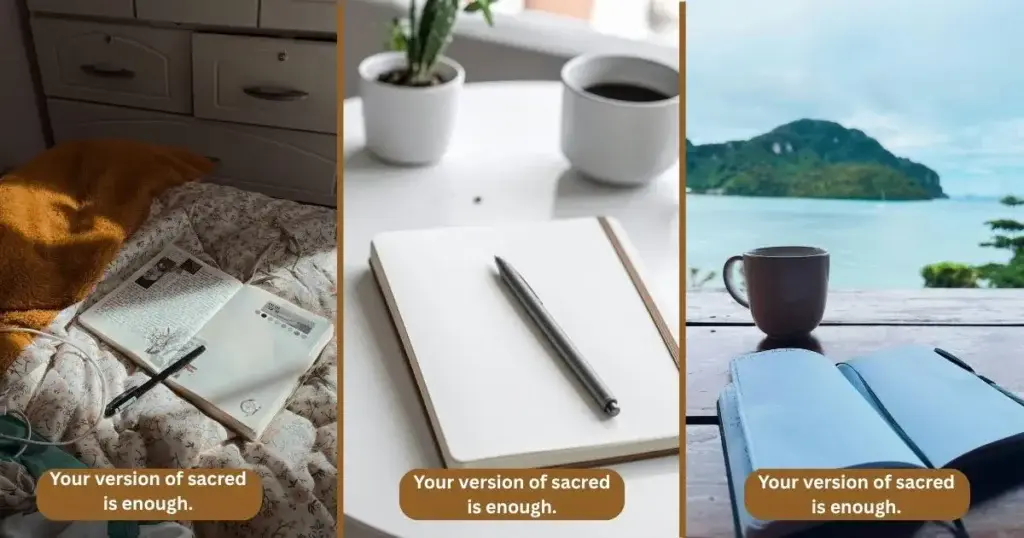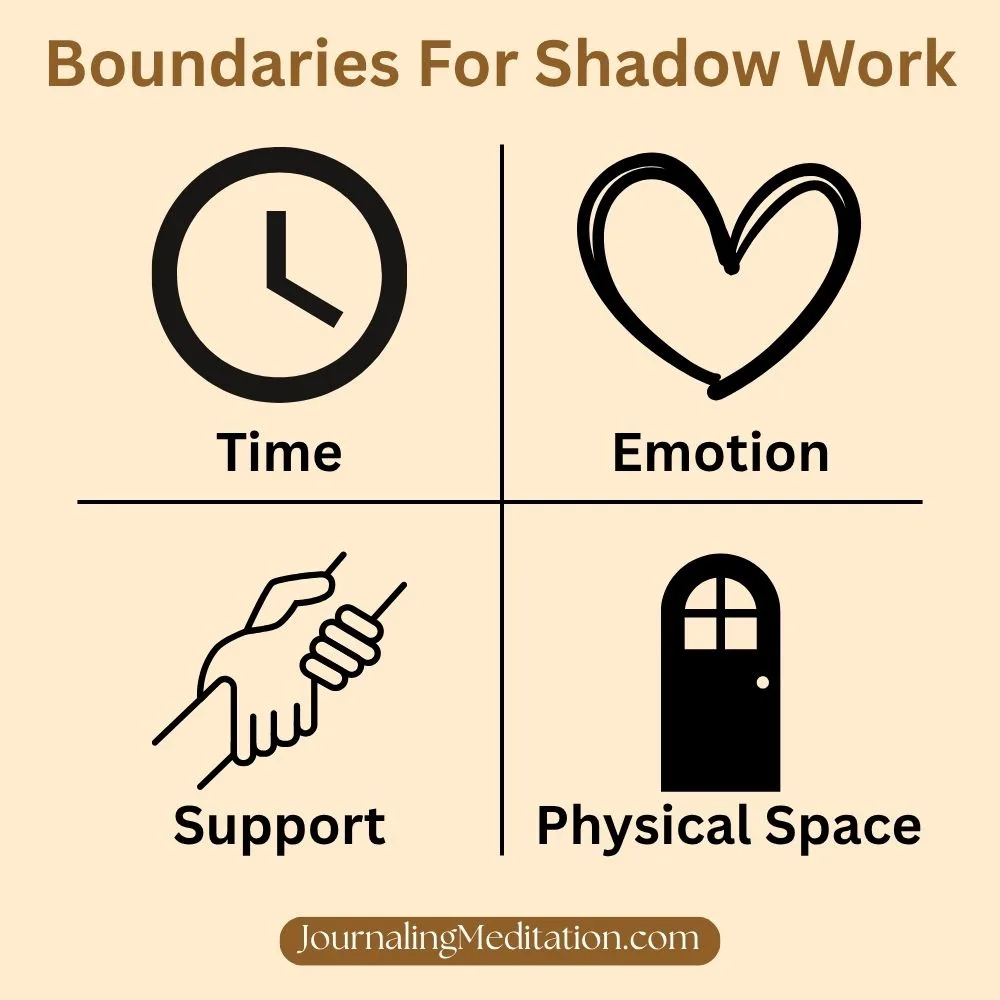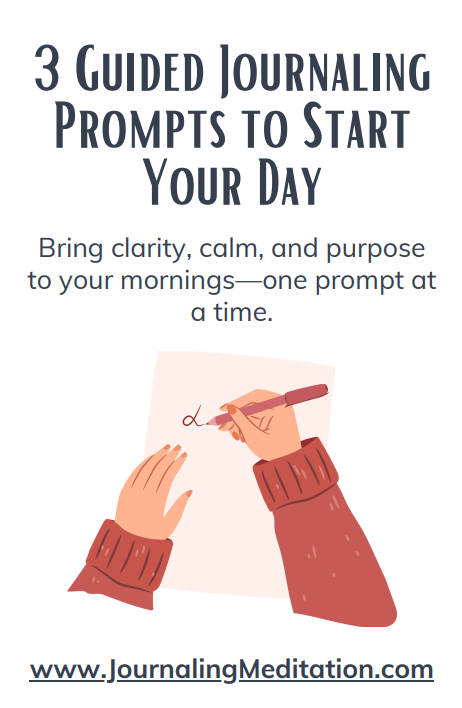
Shadow work isn’t just a practice to peal back personal layers… it’s energetic. And honestly? If you’re diving into your inner world, you should feel grounded while doing it. That’s where creating a safe space comes in.
This isn’t about looks or the picture-perfect, more-space-than-needed room. It’s about permission. A space that gently says, “Hey, it’s okay to feel what I feel.” Whether you’re new to shadow journaling or coming back after a break, preparing your mind, body, and environment can make a world of difference.
Download This 45 Day Shadows Work Journal With Prompts For Self Discovery!
Let’s break down how to build that supportive space for exploration so your shadow work journal practice has room to breathe and grow.
1. Claim a Physical Corner That Feels Yours

No, you don’t need an all out boho-inspired meditation room with a Himalayan salt lamp (unless you’re into that. Then go for it). A cozy corner, a soft blanket, your favorite pen, and a notebook can be more than enough.
Even just sitting in the same spot each time you journal can begin to prepare your body to relax and open up. Try keeping a few grounding items nearby like a calming candle, a smooth crystal or stone, or even a small photo that makes you feel supported.
These physical anchors help signal: “This is my sacred space.”
2. Soften Into the Moment Before Writing

Before you jump into that shadow work journal, take a breath. Or three.
Let your eyes close. Feel your body. Try placing a hand over your heart or belly. You can whisper a simple affirmation like:
“I am safe to explore what’s within.”
This small moment of presence can shift everything. For an added ritual, light a candle before you start and blow it out with intention when you finish. It marks a beginning and an end for your session.
3. Curiosity Over Judgment, Always

Shadow work isn’t about “fixing” yourself. It’s about giving light to the parts of you that have been waiting to be seen. The messy, misunderstood, or exiled emotions we often shove aside.
Let your journal be a space of honesty, not performance. You don’t have to explore epiphanies every single time. Some days, just writing one line and showing up is enough. The journal is your partner, not your critic.
For more on shadow work prompts, check out this beginner’s guide.
4. Set Clear Emotional Boundaries

Not everything that surfaces needs to be solved today or by yourself.
If a memory or emotion feels like too much, it’s okay to pause. Take a walk. Touch something grounding. Sip water. You can return to it when you feel more up to it. And if something really overwhelms you, it might be a sign to bring it to a therapist or other supportive guide.
Your journal isn’t meant to be a pressure cooker. It should be a pressure release valve.
Final Thoughts: Your Space Reflects Your Intention
In your journey of inner exploration through shadow journaling, having a dedicated safe space sets the stage for true discovery and integration. Whether it’s physical, emotional or vibrational, this sanctuary will support openness, vulnerability and truth.
FAQ: Safe Space for Shadow Work
These FAQs answer key questions people are asking, helping you with presence and clarity as you explore your shadow self.
💖 How do I know my space is safe enough for shadow work?
- Choose calm and consistency: A quiet, familiar spot helps the body relax.
- Set emotional tone: Use a grounding phrase like “I am safe to explore.”
- Check your state: If you feel anxious or detached, pause and adjust.
🚧 What boundaries help with shadow journaling?
- Time: Pick a set duration (10 to 15 minutes).
- Emotional: Let feelings come up without needing fixes.
- Support: Plan who you’d contact if overwhelmed.
- Space: Silence devices and let others know you’re unavailable.

🌱: How can I feel grounded during shadow work?
- Start with breath or touch: Try 3 deep breaths, with hand to heart.
- Use grounding tools: A cozy item or pen can help anchor you.
- Close with intention: Stretch, sip water, or blow out a candle. Create a ritual.
Your Turn:
Do you have a routine or item that helps you feel emotionally safe when journaling? Let’s learn from each other in the comments below. 🌿 Thanks for reading!





